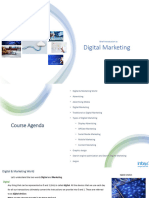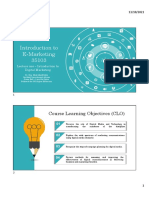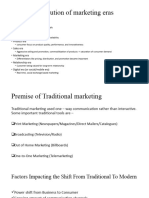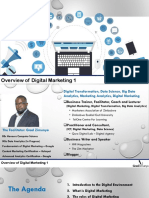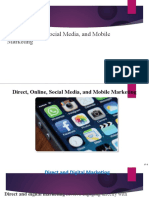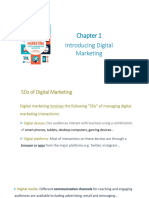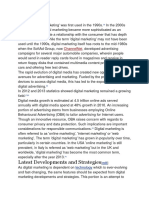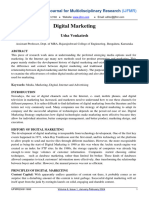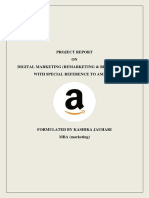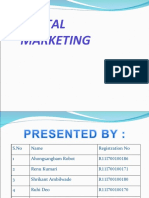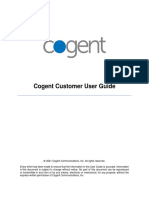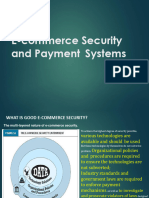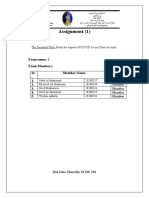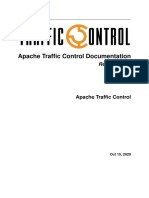0% found this document useful (0 votes)
70 views61 pagesDigital Marketing Essentials
Digital marketing utilizes various digital technologies and platforms to achieve marketing objectives. This includes using a company's website, social media, email, mobile apps, display ads, and search ads. The key types of online media are owned media (controlled by the company), paid media (bought ads), and earned media (word-of-mouth). Digital marketing offers benefits like identifying customer needs, anticipating customer purchases through additional channels, and satisfying customers through electronic channels. It is important for digital marketing strategies to be aligned with overall business goals and support the customer journey.
Uploaded by
Pratik VaidyaCopyright
© © All Rights Reserved
We take content rights seriously. If you suspect this is your content, claim it here.
Available Formats
Download as PPTX, PDF, TXT or read online on Scribd
0% found this document useful (0 votes)
70 views61 pagesDigital Marketing Essentials
Digital marketing utilizes various digital technologies and platforms to achieve marketing objectives. This includes using a company's website, social media, email, mobile apps, display ads, and search ads. The key types of online media are owned media (controlled by the company), paid media (bought ads), and earned media (word-of-mouth). Digital marketing offers benefits like identifying customer needs, anticipating customer purchases through additional channels, and satisfying customers through electronic channels. It is important for digital marketing strategies to be aligned with overall business goals and support the customer journey.
Uploaded by
Pratik VaidyaCopyright
© © All Rights Reserved
We take content rights seriously. If you suspect this is your content, claim it here.
Available Formats
Download as PPTX, PDF, TXT or read online on Scribd
/ 61



